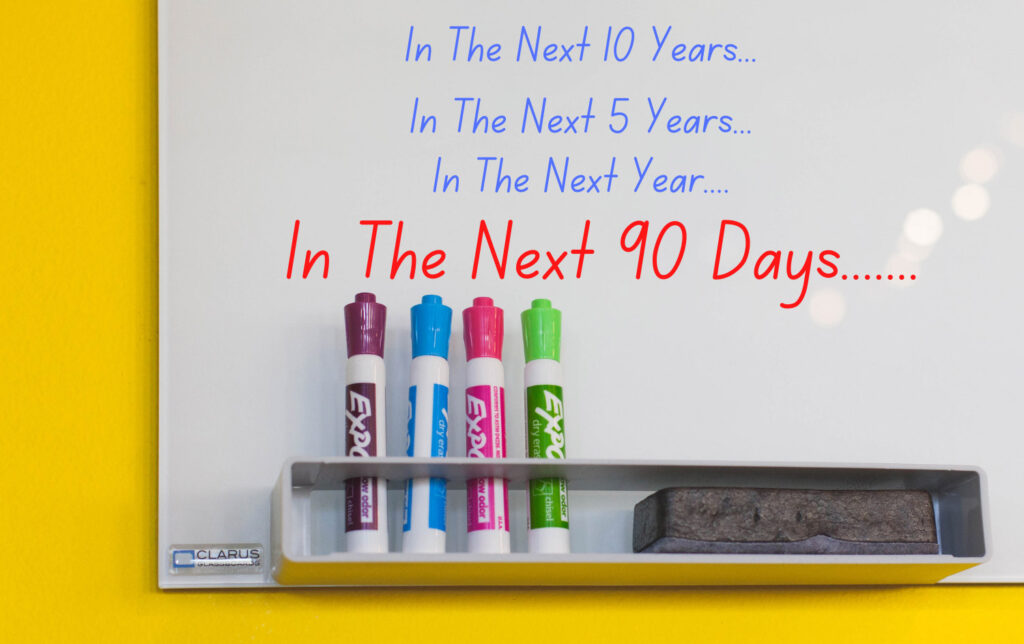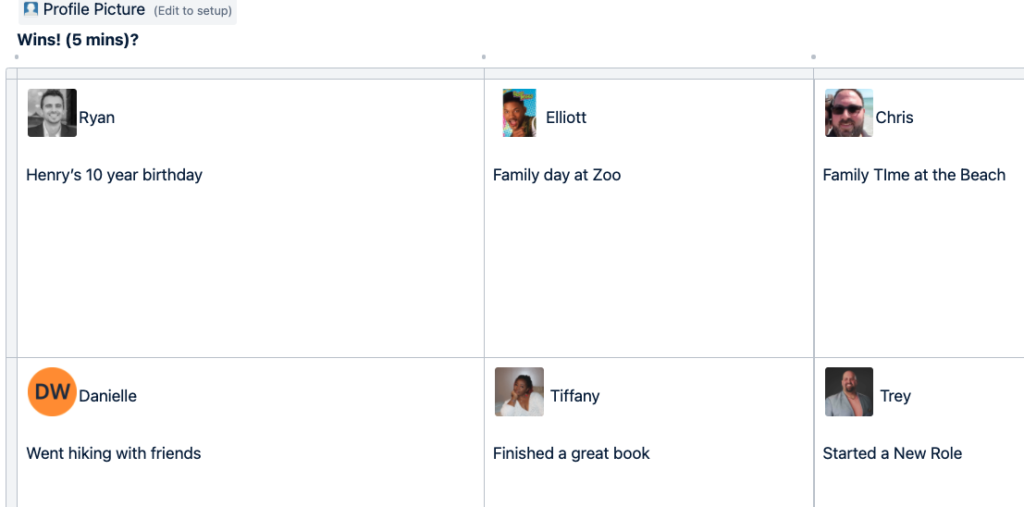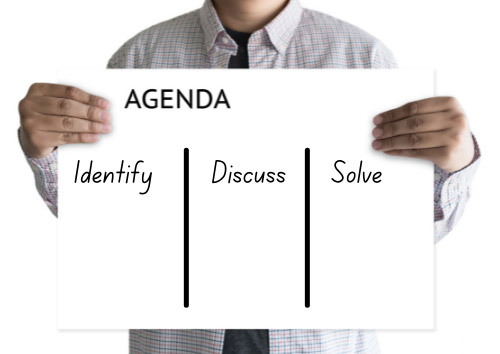Richard Cussons, COO of The ASK Method Company and Bucket.io
We have all had meetings that did not feel like a high-leverage use of our time.
This has led many of us to simply dread clicking Accept when that pesky email invite pops up in your email.
According to a recent study by Harvard Business Review, the average CEO has 37 meetings a week, which equates to 72% of their time;
And in my experience, most managers spend anywhere from one-third to half of their working time in meetings.
Well crumbs, that is a lot of time spent by our team.
So, if we are going to invest in all these bloody meetings, then we may as well run them proper!
Of course we are not saying that meetings need to be eliminated, but it is important to make the most of that time and money investment and use meetings strategically to move your tasks and business forward.
Now, the first thing to note is that not every type of meeting needs to be run the same way. Our tech teams for both ASK and Bucket hold daily huddles to cover the most pressing needs and both teams use their own version of a sprint to Get Stuff Done on time.
But for our more Strategic meetings, we have adopted a process of Level 10 meetings from Gino Wickman’s book Traction to meet our company’s needs.
The Traction process goes way beyond just meetings and is integrated into the culture of our business to keep everyone focused on the most important goals and track our progress against those goals.
Here are some of my top tips for running more efficient strategic meetings, especially those that recur weekly, quarterly and annually.
1) Start in 10 Years!

Yes, the solution to a better weekly meeting really does start with “Where are we going in the next ten years?”
Depending on where you are in your business this could seem like a daunting exercise so start with 1 year, then 5 years then 10 years.
This vision, once created, needs to be communicated repeatedly and consistently and then broken down into aligned, shorter-term goals, such as your annual strategy, and your quarterly strategy.
Your quarterly strategy is what you will be most focused on from a day to day basis, so each quarter you will create 90 day goals called Rocks.
Rocks are your 90 day goals that are most important to helping you reach your annual goals..
- Each rock has a completion deadline within that 90 day period.
- Rocks should be created at a strategic organizational level and then on an individual or tactical level.
- Rocks should be reviewed at each meeting
- Every rock should have ONE owner. That owner is the person accountable for that rock.
2) People First, then Processes
Assuming you already hired the best team of Full and Fractional Employees, the next step is getting the right people in the right MEETINGS.
A key decision for meeting success is – Who should be invited to a meeting as required vs optional? There is a quick and proven model you can use to determine this, known as RACI:
- Responsible – Who are the people responsible for moving the Rocks this meeting is addressing?
- Accountable – Who is the owner of the Rocks this meeting is addressing?
- Consulting – Who do we need to consult to get these Rocks in motion?
- Informed – Who needs to be informed of the status of the Rocks?
Based on your answers to the above you definitely need to have some of the team members responsible for the tasks at the meetings, as well as the people accountable for the Rocks being discussed at the weekly meetings (depending on if it is a strategy or a tactical level meeting).
Team members acting as consultants do not have to be at each meeting, and Team members that need to be informed should just be briefed on the outcomes, but do not need to be involved at each meeting.
Don’t forget we are working with Humans! Start your weekly meeting with a win shared by each participant. The win can be personal or professional – the team member decides. This helps to set a positive tone and is a subtle reminder before jumping into processes that you are all people.

Use scoring and feedback to improve these meetings. End your meeting recording a score of 1 – 10 from each person, based on how effective they felt the meeting was. Any score lower than 8 requires feedback (Ex: The metrics were not prepared in advance, the meeting went over time, required participants were not here, etc.)
One of the biggest complaints that people have about meetings is that they feel like a waste of time. You want your meetings to feel like an investment of time. Therefore, how you honor time in your meetings is critical:
- Schedule meetings in advance, so everyone has the time blocked
- Send the agenda ahead of time, so everyone knows what will be discussed
- Prepare metrics ahead of time for review
- Start the meeting on time
- Monitor time throughout the meeting against the agenda so you do not get stuck on one item for the entire time
- End on time!
3) You Can’t Manage What You Don’t Measure
At each meeting you want to review a report, or a scorecard, that contains all of the key metrics associated with that meeting’s Rocks. These are our leading indicators that help us to know whether a project is on track or off track. These metrics should be updated prior to the start of the meeting so they can be reviewed quickly and presented at the meeting. Any metric of concern should be moved into the IDS section for further discussion during the meeting.
4) Keep Your Team Informed
These are items, known as Headlines, that may not directly fall under a Rock, but they are things that impact your team. In terms of RACI, these are things for which your team needs to be informed.
They could include things like: A new member is joining the team, someone is out on holidays, a deadline reminder, or a quick recap of a specific goal. Headlines typically do not require much discussion. If the headline sparks many questions, it should be moved to the next part of the meeting agenda.
5) IDS – The Core Component of Your Meeting
The main goal of your meetings should be (IDS) to Identify, Discuss and Solve items or issues. This could be a discussion about a bottleneck your team has encountered in a project already started, or a discussion around the next steps in a project.
- Identify – Prior to the meeting send out a collaborative agenda so participants can review, revise, and prepare. This is our unordered list of the questions and topics the team would like to discuss at this meeting…
- Discuss – At the meeting, determine which item on the Identify List is the most important to discuss first (based on its Importance (in priority) or its Urgency (in time)) and then next and so on. Not every item on the list may make it into the discussion within the time allotted, which is why it is so important to have the full unordered list and then select the top 3 things to discuss first. If those items are resolved, pick the next most important topic and carry on.
- Solve – Issues are discussed with all members involved contributing. Resolution can be a quick decision or require a longer brainstorm. Everyone in the meeting should be able to share their perspectives in a respectful way. I’ve said it before, and I’ll say it again, building a team that is able to have the hard discussions and find the best solution together is essential. Any items left over as unresolved, get moved into the unordered Identify List for the next meeting.
This section is the central focus of your strategy meetings and should allow time for both brainstorming, discussion and ideally resolution of any given topic. Having an open honest dialogue about how to accomplish our goals is the best way to move quickly and build a high-performance team that doesn’t depend on a single person to “do all the things” that need to be done.

6) Stay Focused
A way to keep team members focused during your meetings, virtual or live, is to have set meeting expectations:
Take notes throughout the meeting in a dynamic way – on a whiteboard (in-person) or using a shared document (on Zoom). This allows everyone to see the notes and contribute to them and it increases engagement.
Block the meetings on calendars so there are no time / deliverable expectation conflicts. On virtual meetings, have participants engage with cameras on to limit multi-tasking.
7) What’s Next?
Throughout the meeting, you should be documenting Action Items for members of the team to take on after the call. A best practice is to use a system that tracks the Action Items so Incomplete Action Items can be reviewed and completed prior to each meeting. At ASK, we use Confluence and Jira for documenting and tracking the tasks assigned to each person.
Each action item should follow a specific format:
- Assigned to only one person: assigning a task to multiple people is a sure way of making sure it doesn’t get done.
- Be clearly defined: in order to know when a task has been completed there has to be a clear and specific outcome.
- Have a clear deadline: always have a due date or tasks can slip indefinitely!
- Created and reviewed during the meeting: don’t lose the momentum and agreement that you just arrived at in the meeting by waiting until later to document the next steps.
Here at the ASK Method Company, we do our best to run ALL of our strategic meetings using this Level 10 process – and it makes a huge difference. Especially when you have full time employees, contractors, fractional team members – and everyone virtual!
If this info was helpful to you and you would like to continue to learn what our Ask Community Members and Partners are doing to build and grow their businesses, across industries – Subscribe to our podcast below:
Cheers!